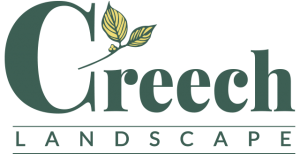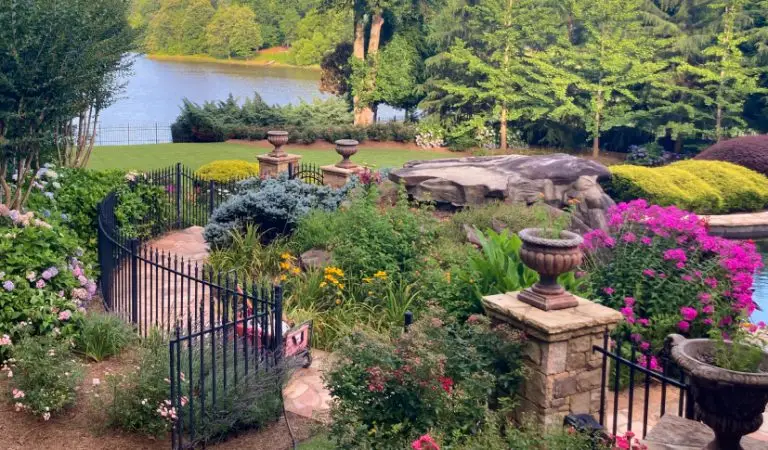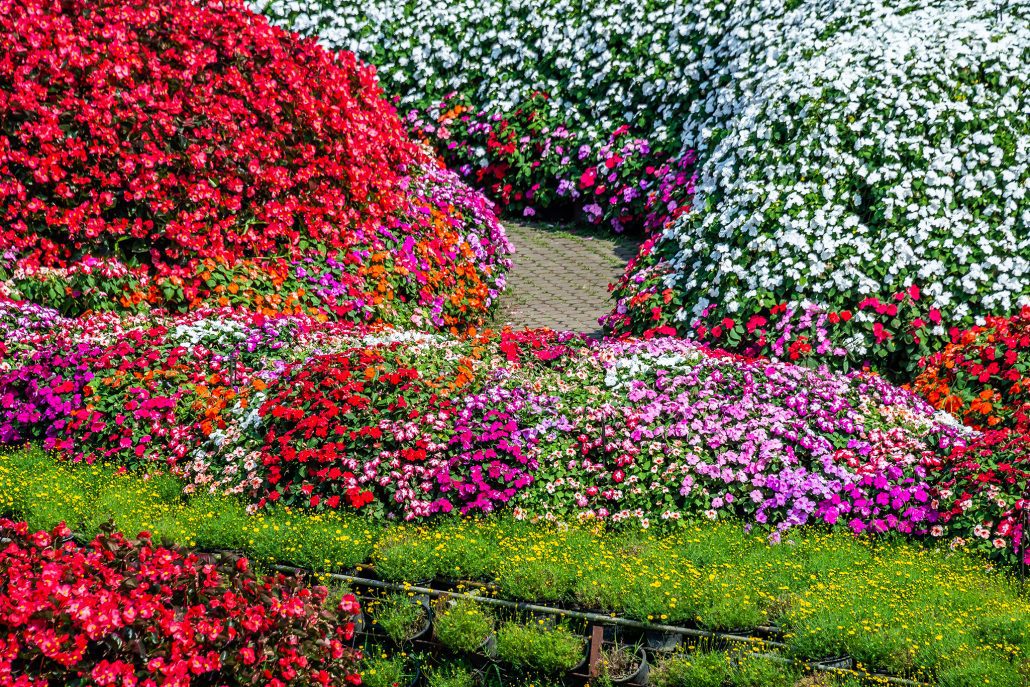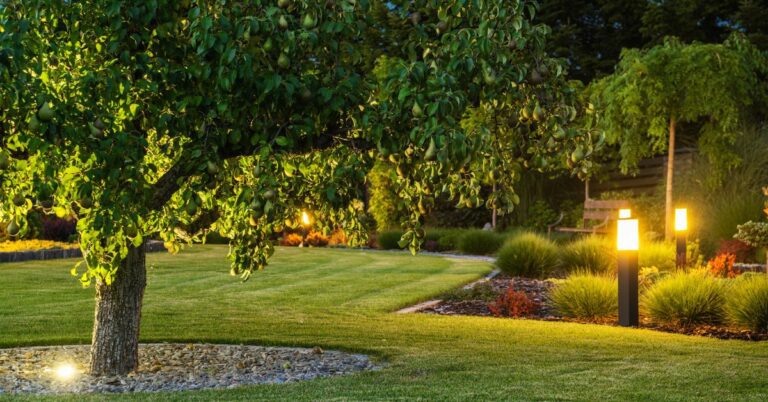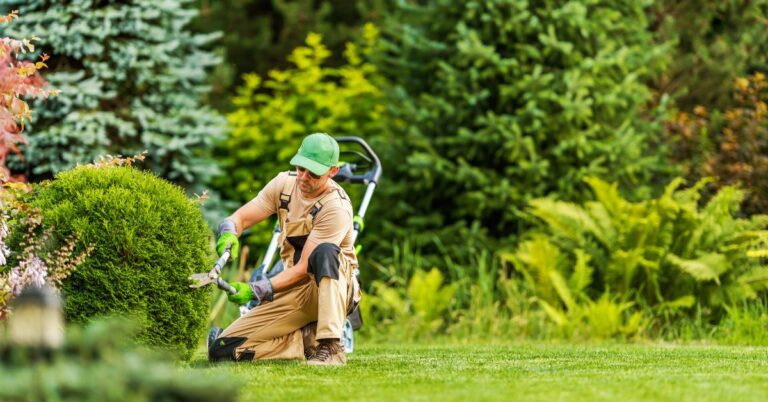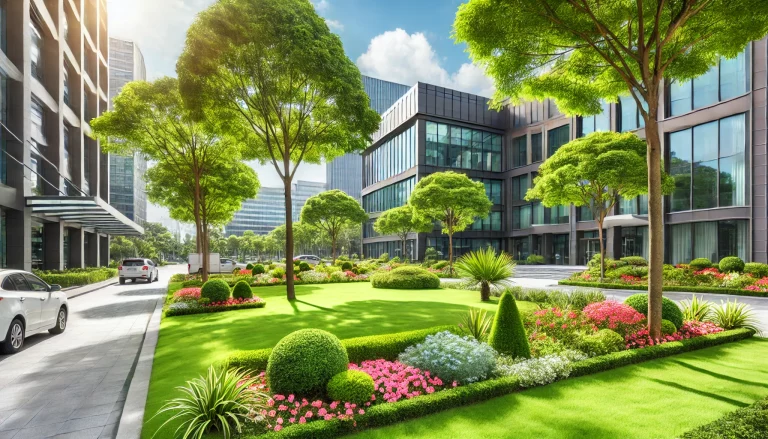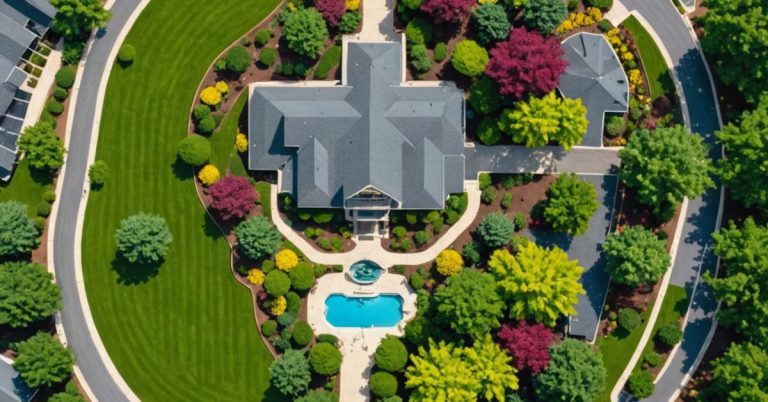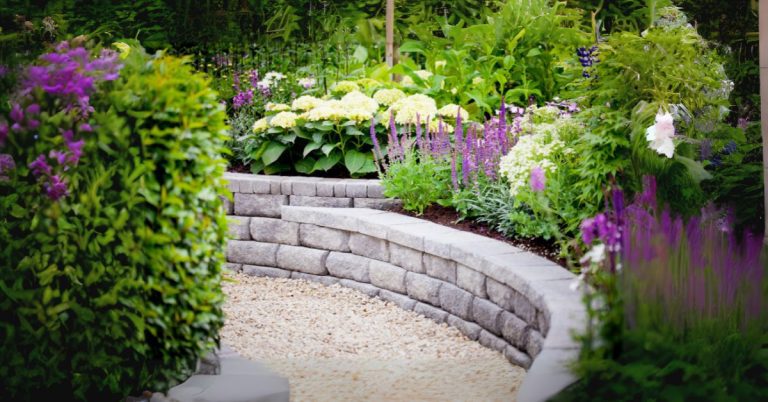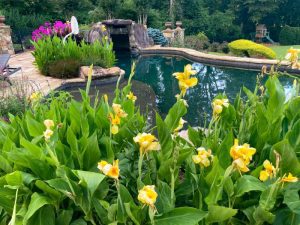When it comes to flower bed designs, there’s something for everyone. Whether you have vast or limited space, sun or shade, you can beautify your landscape with flowers.
The trick is knowing which varieties will work best for your soil conditions, light conditions, and growing zone.
You also must consider aesthetics, maintenance, potential pests, and purpose. Do you like cooking with fresh herbs? Are you interested in helping the bees? Do you have drainage issues you’d like to solve with landscaping?
Our list of 8 beautiful flower bed designs can help determine which might be right for you.
Border vs. Island Flower Bed Designs
Many flower bed designs fall into one of two categories: borders and islands.
Border flower beds utilize a backdrop such as a fence, pathway, stone wall or building. Because of this, these flowerbeds tend to be more linear in shape. They’re also viewed from one side.
A border flowerbed design often stages plants by height. Short plants occupy the front, with medium and tall flowers located behind for maximum viewing.
In contrast, island flower bed designs stand alone. They can be viewed from all sides. The layout is similar to borders, with shorter plants in the front and taller plants toward the middle of the island.
However, islands allow more design flexibility. You can add a bird bath or other garden art as a central focal point. Island flower beds can help create visual interest in large front yards.
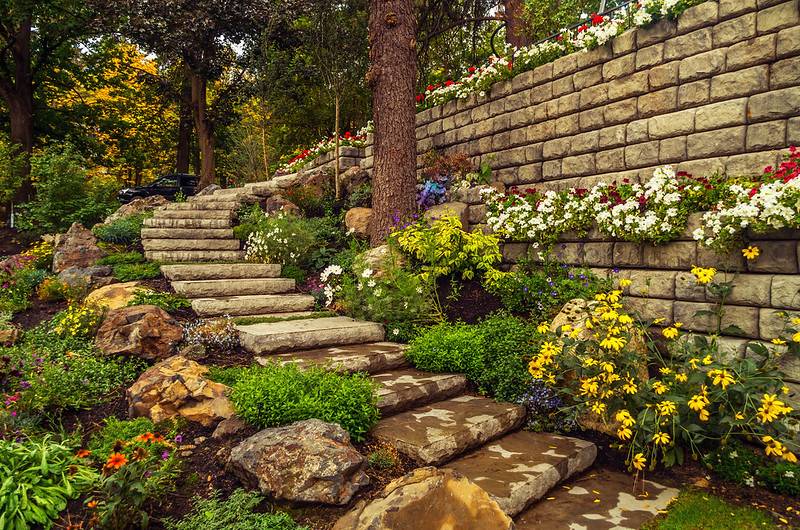
Perennial Garden
Perennials are plants that return year after year. Sometimes they die back in the winter and re-emerge in the spring. Other perennials have foliage all year, depending on your growing zone.
The key to a successful perennial garden is to plant flowers that enjoy similar growing conditions. If your bed is in a sunny location, choose plants that thrive in full sun. In the Atlanta area (zones 7-8) reliable bloomers such as lantana, verbena and coneflower enjoy plenty of sunshine.
On the other hand, it’s best to keep shade-loving plants like hosta lilies and columbine together.
Additionally, you can keep your perennial garden visually interesting all season long by choosing plants with different bloom times.
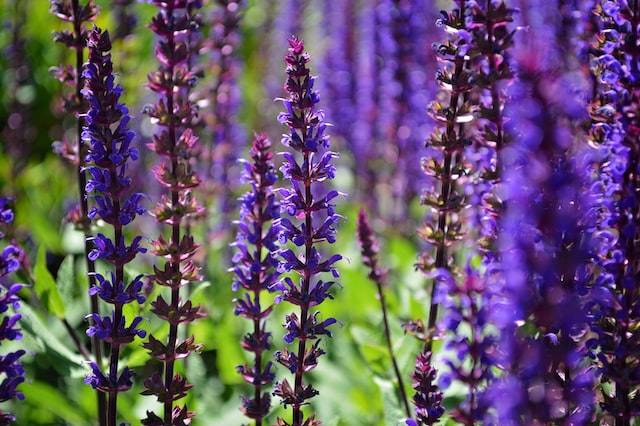
Annual Garden
An annual garden is an opportunity to go wild with colored flowers and interesting textures. Because annual flowers complete their entire growing cycle in one season, they tend to produce extravagant blooms.
As with perennials, choose annuals that will thrive in your environment. Many annuals require full sun, like petunias and zinnias. However, there are some, such as coleus and begonia, that do well in partial or even full shade.
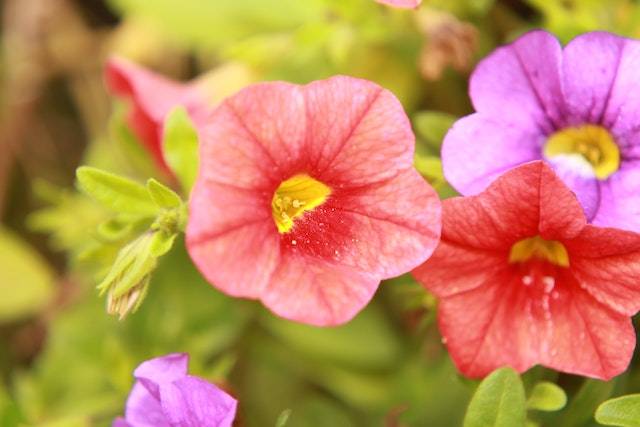
Cutting Garden
If you enjoy fresh cut flowers, a cutting flower garden may be right for you. A cutting garden is one of the flower bed designs with a purpose. Namely, to grow flowers that look great in vases.
Cutting gardens should be located in a back or side yard, or somewhere that isn’t highly visible. Because flowers are most often cut while in full bloom, the garden may look bare sometimes.
Sunflowers, allium, gladioli, zinnias, and peonies are just a few that work well in cutting flower bed designs.
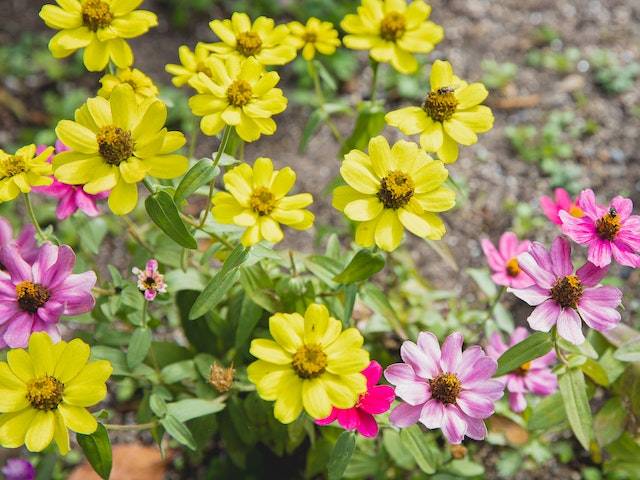
Pollinator Garden
Pollinators are essential to life on earth. According to the U.S. fish and Wildlife Service, residential pollinator gardens can help ensure healthy habitats for generations to come.
Choose native plants and wildflowers that grow well in your soil type. Additionally, be sure to establish them in a sunny location. Pollinators also enjoy some protection from the wind.
When selecting plants, ensure none have been treated with pesticides or insecticides. These can harm pollinators and decrease their population.
Choose plants that bloom at different times to provide pollinators with a steady food supply. It will also create a bright and visually interesting garden throughout the growing season.

Herb Garden
An herb garden is one of our favorite flower bed designs with a purpose. Not only are herbs easy to grow, but they’re also useful in cooking, baking, cleaning and holistic health.
Many popular cooking herbs such as rosemary and mint require very little maintenance to grow. In fact, mint will often take over planting beds if left untended.
Additionally, herbs like lavender and lemon balm work well in pollinator gardens, because their nectar attracts bees.
Herbs grow particularly well in raised beds. However, if space is a concern, they will also grow in window boxes, hanging baskets, and other containers.
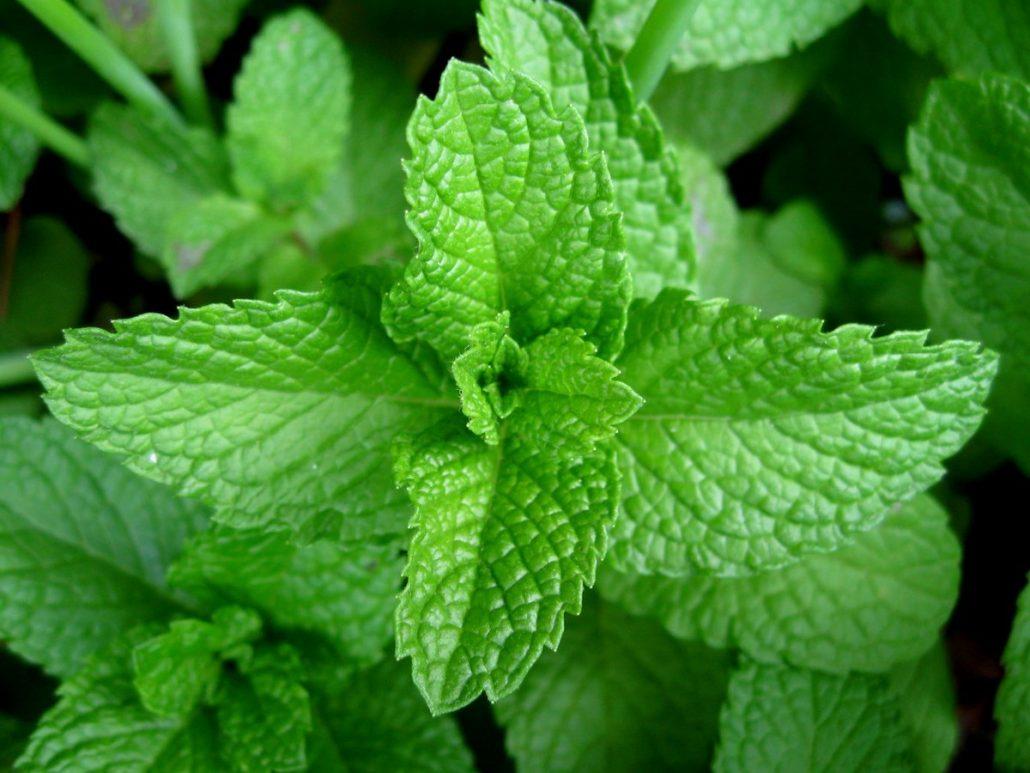
Shade Garden
If you live in a heavily wooded area, you may think your landscaping choices are limited. However, there are many plants with interesting foliage and even flowers that grow well in partial to full shade.
Hostas are one of the most popular shade garden plants, with good reason. They come in a range of sizes and colors, each with dramatic foliage. They also bloom at different times during the summer, depending on the variety.
In addition to hosta lilies, astilbe, columbine, bluebells, and begonias all add color and interest to a shady flower bed design.
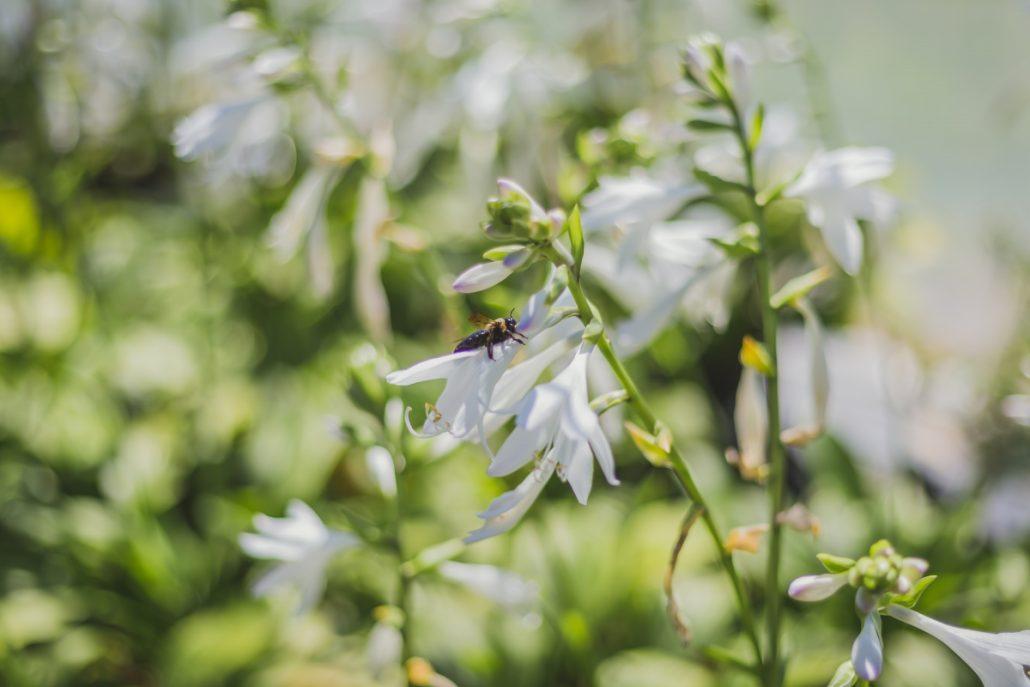
Rain Garden
A rain garden is a shallow landscape bed designed to occupy a wet spot. Filled with water-tolerant plants, it holds excess water until it evaporates.
Considered eco-friendly landscape design, rain gardens offer an attractive solution to storm water runoff. They improve curb appeal while helping filter pollution.
Low spots or ditches make natural choices for situating a rain garden. Ideally, the garden bed should be 6-8 inches deep with a surrounding berm to help hold water.
Choose plants that don’t mind wet feet such as yellow flag iris, silver mound artemisia, blue fescue grass and daylilies.
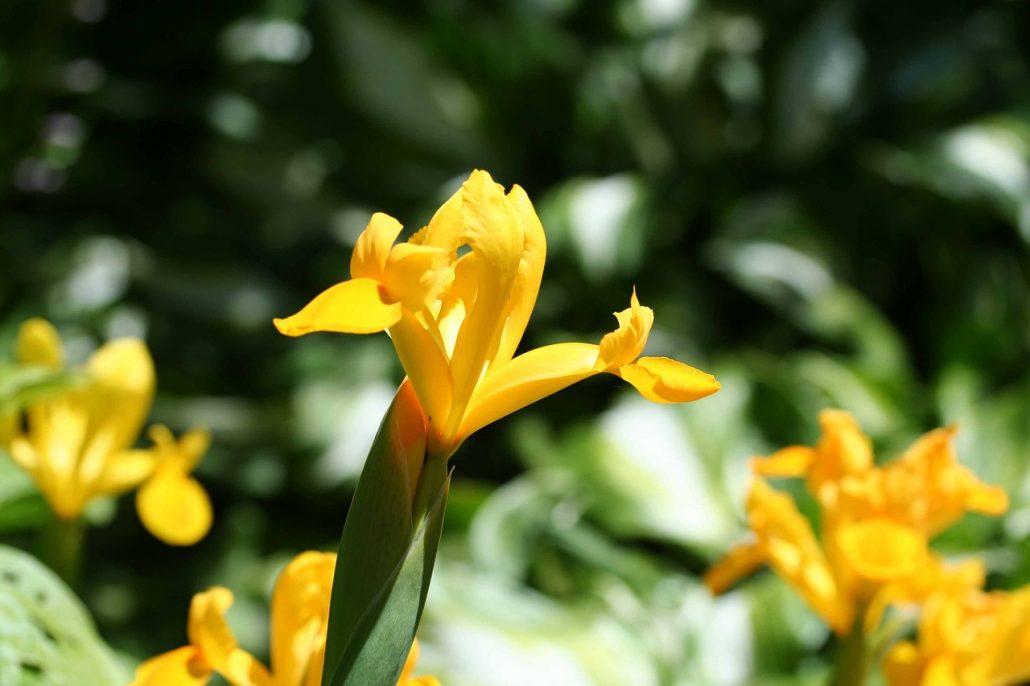
Container Garden
If you’re short on space, a container garden is a great way to enjoy flowers without planting them in the ground. Containers can be used to grow herbs, vegetables, and almost any type of flower.
Like other flower bed designs, it’s necessary to keep light conditions and growing zones in mind before planting.
“Thrillers, fillers, and spillers” is a good rule of thumb for creating dramatic flower containers. Thrillers are tall centerpiece plants such as purple fountain grass or iris. Spillers include sweet potato vine, creeping jenny, vinca or trailing lantana that spills over the edge.
For fillers, try coleus, herbs, or moss rose. Be sure to use good quality potting soil and avoid over- or underwatering.
Ask The Creech Landscape Team About Flower Bed Designs
f you need help with flower bed ideas, contact Creech Landscape. Our expert team can plan, plant, and assist you with all your landscaping needs or give us a call at 770-988-4635.
